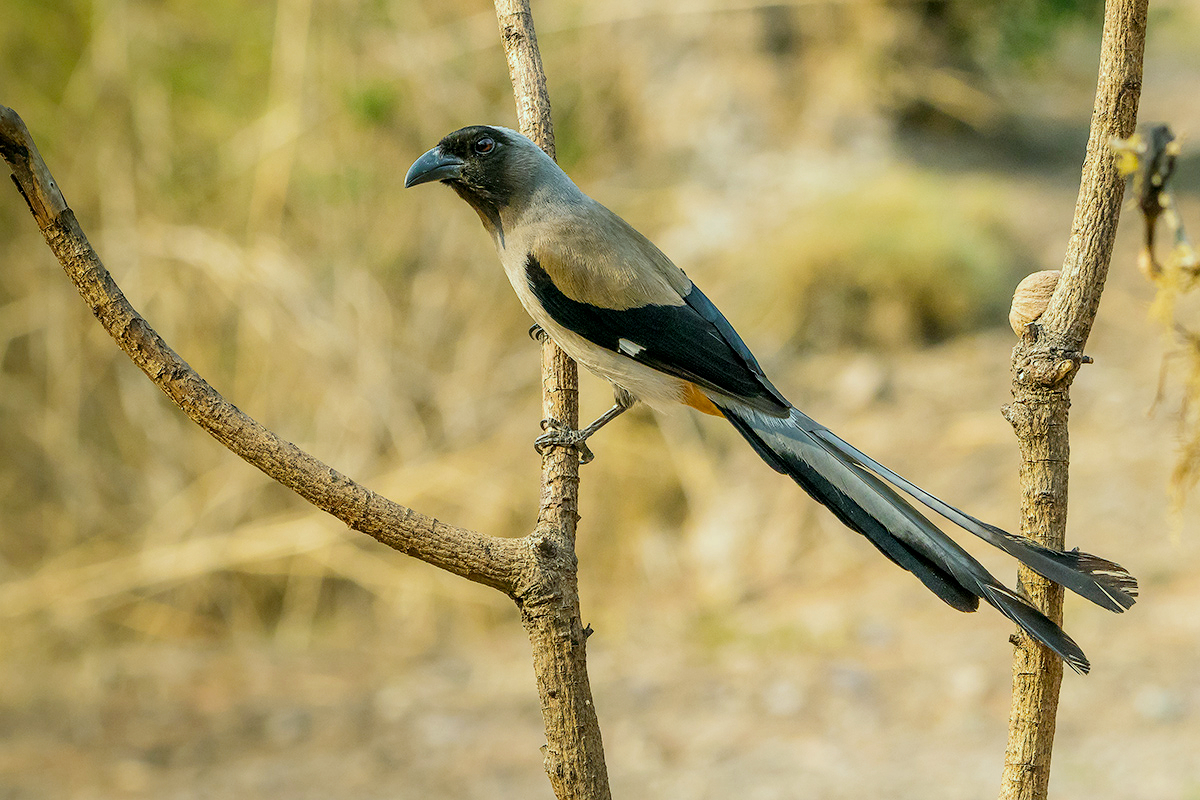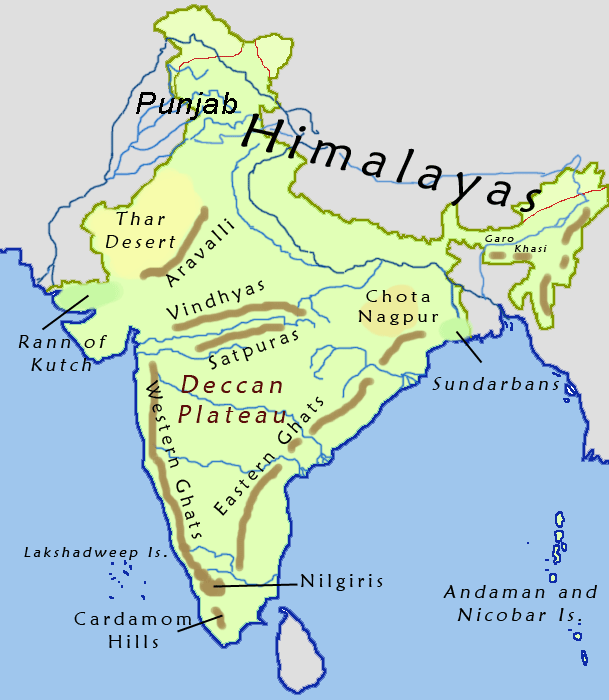|
Grey Treepie
The grey treepie (''Dendrocitta formosae''), also known as the Himalayan treepie, is an Asian treepie, a medium-sized and long-tailed member of the crow family. The species was first described by Robert Swinhoe in 1863. They are widely distributed along the foothills of the Himalayas in the Indian Subcontinent and extending into Indochina, Nepal, southern mainland China and Taiwan. The populations vary in plumage and several are named as subspecies. Grey treepies are omnivorous birds mostly thriving among dense foliage and in forests. They sometimes take part in mixed species flocks with laughingthrushes, especially the white-throated laughingthrush. They systematically work together through the hill forests, rhododendrons, oaks and other broad-leaved trees, especially in the mornings. Description The grey treepie is long and weighs . It is the same size as other ''Dendrocitta'' species and is separated from them by the overall grey colour of the body. The races in the ... [...More Info...] [...Related Items...] OR: [Wikipedia] [Google] [Baidu] |
Robert Swinhoe
Robert Swinhoe FRS (1 September 1836 – 28 October 1877) was an English diplomat and naturalist who worked as a Consul in Qing-era Taiwan (then known to Westerners as Formosa). He catalogued many Southeast Asian birds, and several, such as Swinhoe's pheasant, are named after him. Biography Swinhoe was born in colonial-era Kolkata (then known as Calcutta) where his father, who came from a Northumberland family, was a lawyer. There is no clear record of the date of his arrival in England, but it is known he attended the University of London, and in 1854, joined the China consular corps. He was stationed to the remote port of Amoy, some 300 miles to the northeast of Hong Kong, in 1855. While at this port, he not only mastered the Chinese language (both official Mandarin and the local Amoy dialect), but also initiated a detailed and authoritative understanding of the ornithology of eastern China. In March 1856, Swinhoe made an "adventurous" visit to the camphor districts of no ... [...More Info...] [...Related Items...] OR: [Wikipedia] [Google] [Baidu] |
Omnivorous
An omnivore () is an animal that regularly consumes significant quantities of both plant and animal matter. Obtaining energy and nutrients from plant and animal matter, omnivores digest carbohydrates, protein, fat, and fiber, and metabolize the nutrients and energy of the sources absorbed. Often, they have the ability to incorporate food sources such as algae, fungi, and bacteria into their diet. Omnivores come from diverse backgrounds that often independently evolved sophisticated consumption capabilities. For instance, dogs evolved from primarily carnivorous organisms ( Carnivora) while pigs evolved from primarily herbivorous organisms (Artiodactyla). Despite this, physical characteristics such as tooth morphology may be reliable indicators of diet in mammals, with such morphological adaptation having been observed in bears. The variety of different animals that are classified as omnivores can be placed into further sub-categories depending on their feeding behaviors. ... [...More Info...] [...Related Items...] OR: [Wikipedia] [Google] [Baidu] |
Mixed-species Foraging Flock
A mixed-species feeding flock, also termed a mixed-species foraging flock, mixed hunting party or informally bird wave, is a flock (birds), flock of usually insectivorous birds of different species that join each other and move together while foraging. These are different from feeding aggregations, which are congregations of several species of bird at areas of high food availability. While it is currently unknown how mixed-species foraging flocks originate, researchers have proposed a few mechanisms for their initiation. Many believe that nuclear species play a vital role in mixed-species flock initiation. Additionally, the forest structure is hypothesized to play a vital role in these flocks' formation. In Sri Lanka, for example, vocal mimicry by the greater racket-tailed drongo might have a key role in the initiation of mixed-species foraging flocks, while in parts of the Americas, American tropics packs of foraging golden-crowned warblers might play the same role. Composition ... [...More Info...] [...Related Items...] OR: [Wikipedia] [Google] [Baidu] |
Grey Treepies (Dendrocitta Formosae Himalayana) Pokhara
Grey (more frequent in British English) or gray (more frequent in American English) is an intermediate color between black and white. It is a neutral or achromatic color, meaning that it has no Colorfulness#Chroma, chroma. It is the color of a cloud-covered sky, of wood ash, ash, and of lead. The first recorded use of ''grey'' as a color name in the English language was in 700 Common Era, CE.Maerz and Paul ''A Dictionary of Color'' New York:1930 McGraw-Hill Page 196 ''Grey'' is the dominant spelling in English language in Europe, European and Commonwealth English, while ''gray'' is more common in American English; however, both spellings are valid in both varieties of English. In Europe and North America, surveys show that gray is the color most commonly associated with Neutrality (philosophy), neutrality, conformity, boredom, uncertainty, old age, apathy, indifference, and modesty. Only one percent of respondents chose it as their color preferences, favorite color. ... [...More Info...] [...Related Items...] OR: [Wikipedia] [Google] [Baidu] |
Dendrocitta Cinerascens
The Bornean treepie (''Dendrocitta cinerascens'') is a passerine bird belonging to the treepies genus, ''Dendrocitta'', of in the crow family, Corvidae. It is endemic to the island of Borneo. It is sometimes treated as a subspecies of the Sumatran treepie (''D. occipitalis''). Description It is a fairly large bird, 40 centimetres in length, including a long graduated tail, broad rounded wings and short weak legs. The underparts are pinkish-brown. The head is also pinkish-brown with a pale silver crown and a dark stripe over the eye and across the forehead. The back is greyish and the rump is pale. The wings are black with a white patch and the tail is grey with black tips to the feathers. The bill and legs are grey-black and the eyes are reddish. The Sumatran treepie differs in having a pale brown back, a dark brown head with a white nape and a thinner bill. The Bornean treepie is a noisy bird with a variety of loud, explosive calls including a bell-like whistle and various grunt ... [...More Info...] [...Related Items...] OR: [Wikipedia] [Google] [Baidu] |
Dendrocitta Occipitalis
The Sumatran treepie or Sunda treepie (''Dendrocitta occipitalis'') is a species of bird in the family Corvidae. It is endemic to the island of Sumatra in Indonesia. Its natural habitats are subtropical or tropical moist lowland forest and subtropical or tropical moist montane forest. The Bornean treepie (''D. cinerascens'') is sometimes considered to be a subspecies of this bird. References Sumatran treepie Birds of Sumatra Sumatran treepie The Sumatran treepie or Sunda treepie (''Dendrocitta occipitalis'') is a species of bird in the family Corvidae. It is endemic to the island of Sumatra in Indonesia. Its natural habitats are subtropical or tropical moist lowland forest and subtro ... Taxonomy articles created by Polbot Taxa named by Salomon Müller {{Corvidae-stub ... [...More Info...] [...Related Items...] OR: [Wikipedia] [Google] [Baidu] |
Species Complex
In biology, a species complex is a group of closely related organisms that are so similar in appearance and other features that the boundaries between them are often unclear. The taxa in the complex may be able to hybridize readily with each other, further blurring any distinctions. Terms that are sometimes used synonymously but have more precise meanings are cryptic species for two or more species hidden under one species name, sibling species for two (or more) species that are each other's closest relative, and species flock for a group of closely related species that live in the same habitat. As informal taxonomic ranks, species group, species aggregate, macrospecies, and superspecies are also in use. Two or more taxa that were once considered conspecific (of the same species) may later be subdivided into infraspecific taxa (taxa within a species, such as plant variety (botany), varieties), which may be a complex ranking but it is not a species complex. In most cases, a specie ... [...More Info...] [...Related Items...] OR: [Wikipedia] [Google] [Baidu] |
Hainan
Hainan is an island provinces of China, province and the southernmost province of China. It consists of the eponymous Hainan Island and various smaller islands in the South China Sea under the province's administration. The name literally means "South of the Sea". The province has a land area of , of which Hainan Island is and the rest is over 200 islands scattered across three archipelagos: Zhongsha Islands, Zhongsha, Xisha Islands, Xisha and Nansha Islands, Nansha. It was part of Guangdong from 1950 to 1988, after which it was made a province of its own and was designated as a special economic zones of China, special economic zone by Deng Xiaoping, as part of the Chinese economic reform program. The Han Han Chinese, Chinese population, who compose a majority of the population at 82%, speak a wide variety of languages including Standard Chinese, Hainanese, Hainam Min, Yue Chinese, Cantonese, Hakka Chinese, etc. Indigenous peoples such as the Hlai people, Hlai, a Kra–Dai l ... [...More Info...] [...Related Items...] OR: [Wikipedia] [Google] [Baidu] |
Eastern Ghats
The Eastern Ghats is a mountain range that stretches along the East Coast of India, eastern coast of the Indian peninsula. Covering an area of , it traverses the states and union territories of India, states of Odisha, Telangana, Andhra Pradesh, Karnataka, and Tamil Nadu. The range forms a discontinuous chain of mountains along the eastern edge of the Deccan Plateau, stretching from north of the Mahanadi River in Odisha to Vaigai River in Tamil Nadu at the southern end of the peninsula. The Eastern Ghats meet the Western Ghats at the Nilgiris. The average elevation is around and Arma Konda is the highest peak in the mountains at . Geological evidence indicates that the mountains were formed during the archeozoic era and became part of the Indian subcontinent post the break-up of the supercontinent of Rodinia and the formation of Gondwana. The mountains were formed through further metamorphism during the mid-Proterozoic era. The northern section of the range has an elevation r ... [...More Info...] [...Related Items...] OR: [Wikipedia] [Google] [Baidu] |
Dendrocitta
''Dendrocitta'' is a genus of long-tailed passerine birds in the crow and jay family, Corvidae. They are resident in tropical South Asia, South and Southeast Asia. The generic name is derived from the Greek language, Greek words ''dendron'', meaning "tree," and ''kitta'', meaning "magpie". The species are plumaged in black, grey and rufous. Typically, the face and flight feathers are black, and the back is rufous. They are highly arboreal and rarely come to the ground to feed. They are, in taxonomic order: References * Madge and Burn, ''Crows and Jays'' External linksTreepie videos on the Internet Bird Collection {{Taxonbar, from=Q811555 Dendrocitta, Bird genera Taxa named by John Gould ... [...More Info...] [...Related Items...] OR: [Wikipedia] [Google] [Baidu] |
Grey Treepie From Sattal
Grey (more frequent in British English) or gray (more frequent in American English) is an intermediate color between black and white. It is a neutral or achromatic color, meaning that it has no chroma. It is the color of a cloud-covered sky, of ash, and of lead. The first recorded use of ''grey'' as a color name in the English language was in 700 CE.Maerz and Paul ''A Dictionary of Color'' New York:1930 McGraw-Hill Page 196 ''Grey'' is the dominant spelling in European and Commonwealth English, while ''gray'' is more common in American English; however, both spellings are valid in both varieties of English. In Europe and North America, surveys show that gray is the color most commonly associated with neutrality, conformity, boredom, uncertainty, old age, indifference, and modesty. Only one percent of respondents chose it as their favorite color. Etymology ''Grey'' comes from the Middle English or , from the Old English , and is related to the Dutch and German ... [...More Info...] [...Related Items...] OR: [Wikipedia] [Google] [Baidu] |
Rhododendron
''Rhododendron'' (; : ''rhododendra'') is a very large genus of about 1,024 species of woody plants in the Ericaceae, heath family (Ericaceae). They can be either evergreen or deciduous. Most species are native to eastern Asia and the Himalayan region, but smaller numbers occur elsewhere in Asia, and in North America, Europe and Australia. It is the national flower of Nepal, the List of U.S. state and territory flowers, state flower of Washington (state), Washington and West Virginia in the United States, the state flower of Nagaland and Himachal Pradesh in India, the provincial flower of Jeju Province in South Korea, the provincial flower of Jiangxi in China and the List of Indian state trees, state tree of Sikkim and Uttarakhand in India. Most species have brightly coloured flowers which bloom from late winter through to early summer. Azaleas make up two subgenera of ''Rhododendron''. They are distinguished from "true" rhododendrons by having only five anthers per flower. E ... [...More Info...] [...Related Items...] OR: [Wikipedia] [Google] [Baidu] |






